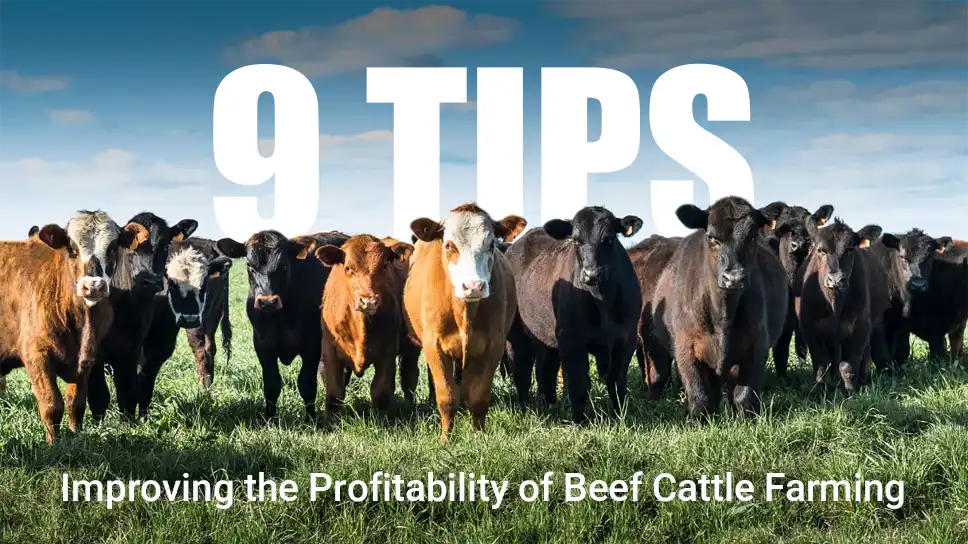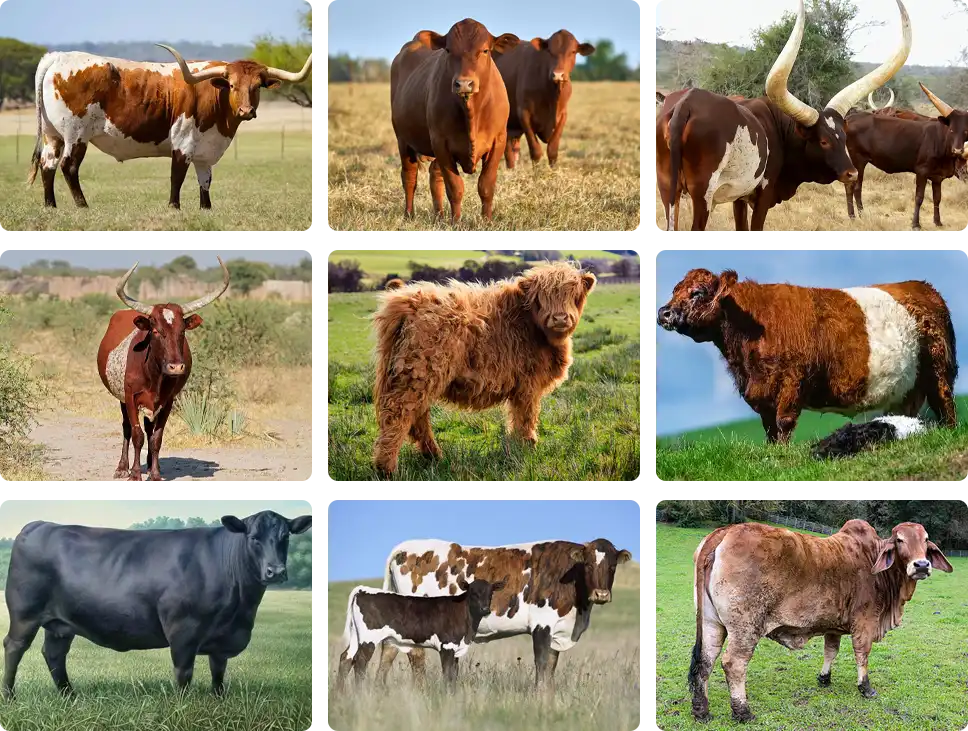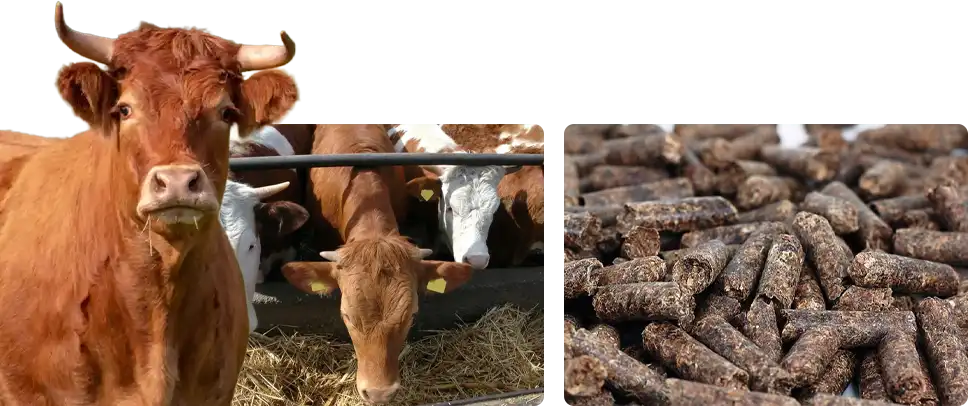9 Practical Ways to Increase Profits on Your Beef Cattle Farm
Raising beef cattle is getting harder to profit from. Many farmers are barely breaking even, even at peak market prices. Some even depend on off-farm jobs just to stay afloat.
Raising beef cattle and making money isn't easy. But if you're open to change, success is still possible. With the right plan, you can raise your profit margins in a big way.
Here are 9 simple ways to help you make more money from beef cattle farming.

1.Pick a Breed That Suits Your Farm
There are over 250 beef cattle breeds out there. So don't just go with what's trendy or popular. To make better money, keep two things in mind:
Make sure the breed fits your local climate
Some breeds handle certain environments better than others. Picking cattle that suit your area can keep them healthier and help them grow better.
- In hot areas, breeds like American Criollo, Senepol, Ankole-Watusi, Sanga, and other zebu types usually do great.
- If your winters are long and cold, tough breeds like Highland or Galloway work well.
- For areas with distinct seasons, no single breed can handle everything. Try crossbreeding heat-tolerant types like Brahman with cold-hardy breeds like Angus or Hereford. That way, your herd can handle both summer and winter better.
Keep an Eye on the Market
Stay connected to your local market. Chat with other ranchers, meat buyers, or folks who know the business. They'll know what sells-like grass-fed beef, organic meat, or certain cuts people ask for.
Pay attention to how cattle supply is shifting in your area. That gives you a clearer picture of what buyers actually want. That way, you can pick the right breed and fine-tune your feeding or herd plans. It'll help you stay ahead in the market.
Think about how long each breed takes to finish. And don't forget to consider your feed and grazing setup. All of this makes it easier to choose a breed that works for your farm.

2.Build a Safe and Efficient Cattle Handling System
A well-designed cattle handling system protects both your cattle and your team. Regularly check fences, chutes, pens, alleys, and other handling equipment to prevent injuries and keep daily operations running smoothly. Routine cleaning and maintenance are key to keeping the system running safely and efficiently.
It also helps to set up the system near water and power sources if possible. This improves workflow, reduces labor costs, and saves valuable time.
3.Feed Your Cattle the Right Way
Cattle need different nutrition at each stage of growth. Feeding them right can help boost daily weight gain, shorten the finishing period, and cut down on feed waste and health problems. That means lower overall costs.
Young Calves
Newborn calves rely mostly on milk. But from the second week, it's important to start offering small amounts of starter feed to support rumen development.
The goal is to balance milk and solid feed early on, helping the rumen mature properly. This gives calves a strong start for steady growth later.
Growing Cattle
At this stage, the focus is on healthy bone and muscle growth. A common approach is to offer roughage freely and limit grain supplements.
Cattle should have access to pasture, hay, or silage to meet basic energy needs and keep their chewing behavior natural. If faster growth is needed, you can add pelleted concentrates to the diet.
Finishing Cattle
Now the aim is fast, efficient weight gain-without harming rumen function.
It's important to manage feed transitions carefully and keep enough fiber in the diet. That helps prevent digestive issues and supports better finishing performance.
(Learn more: Feeding Guide: Cattle Feed Pellets for Beef Cattle by Growth Stage)

4.Keep Feed Costs Under Control
Feed is one of the biggest costs in beef cattle farming. One way to save is by making your own feed or even setting up a small feed plant.
Make Your Own Cattle Feed Pellets
If you run a small farm, making your own feed can help cut costs without compromising nutrition. Pelletizing the feed makes it easier to handle and more efficient to use.
Many farmers use pelleted feed because it's easy to store, lasts longer, and is simple to transport. It packs in more nutrients, is easier for cattle to digest, and may help lower disease risk.
Making your own feed pellets helps reduce daily costs. Over time, it can improve your bottom line-without cutting corners on nutrition.( Related Articles: How to Make Cattle Feed Pellets)

Consider Building a Small Cattle Feed Plant
If your farm has grown and is already bringing in some profit, setting up a small cattle feed plant can be a smart next step.
It's especially useful if you're in a region with easy access to raw materials like corn stalks, soybean meal, or wheat bran. A local plant helps you make better use of what's nearby and can greatly reduce feed costs.
With your own setup, you're in full control of production. You can choose your ingredients, fine-tune the nutrient mix, and maintain high hygiene standards to protect herd health and beef quality.
If your equipment allows, you can also process custom feed for others or sell extra product to nearby farms-adding a new income stream. Building a feed plant is a practical way to cut costs, take more control of your supply, and grow your farm's profits in the long run.
( Related Articles: How Much to Build a Livestock Feed Mill )
5.Make a Solid Financial Plan
A clear financial plan is key to running a profitable beef cattle farm. It should cover your daily income and expenses, how you'll handle cash flow ups and downs, tax records, insurance, and ideas for reinvesting in the business.
Your budget should include costs like water, power, feed, labor, equipment, facilities, and marketing. Update it regularly based on how your farm is doing. Income projections can help you manage spending and use your resources wisely. Keep your financial records organized. This makes tax filing easier and helps when applying for tax breaks or government support-both of which can increase your profits.
A solid insurance plan lowers your risk. Make sure it covers your land, buildings, cattle, and workers. Review it from time to time to stay protected. It's also smart to reinvest part of your profits into the farm. Buying new tools, growing your herd, or adding land can all help you expand and stay competitive.
Planning your finances ahead of time helps your farm grow steadily and handle risks better.
6.Manage Herd Health
A healthy herd is key to long-term success in beef cattle farming. To reduce losses from disease, set up a health plan that covers regular checkups, disease prevention, and smart vaccination practices.
Keep an eye on your cattle and look for early signs of illness. Catching issues early helps stop small problems from turning serious. It's also smart to bring in a vet regularly and keep health records for each animal-including shots, treatments, weight, and breeding history. This supports better herd management and helps with breeding and sales decisions.
When adding new cattle, always test for diseases like BVD, IBR, and Johne's disease to avoid bringing in infections.
Vaccines matter, but they're not enough on their own. A good health plan also needs biosecurity, proper feeding, and daily care. Together, these steps help lower medical costs, reduce illness, and improve survival rates-so you can keep your profits steady.

7.Choose the Right Calving Season
Many farms calve in late winter or early spring to sell weaned calves in the fall. But this can be costly. It takes more labor and high-quality feed to keep cows in good shape through the winter. Plus, you miss out on cheap winter grazing.
A better option is to delay calving until 4 to 6 weeks after spring grass starts growing. By then, the weather is warmer and the ground is drier. This helps calves survive and lowers the chance of birth complications. Cows also recover faster on fresh pasture in spring and summer. Even if they lose some weight over winter, they'll bounce back in time for calving. This lets you cut down on expensive winter feed and make the most of your grazing season.
If calves aren't weaned by fall, you can keep them with their mothers over winter. They'll keep nursing, so early feeding costs stay low. After grazing and finishing next summer, they can be sold as yearlings at a better price.
With this approach, you may raise the same amount of beef-or more-with fewer cows. You also save on winter feed, which helps improve your overall return.
8.Improve Your Marketing Skills
Traditional sales channels like auctions, live cattle markets, and direct deals have worked for years. But they often give farmers little control over pricing-and that means limited profits. If you want to earn more, you need a clear, hands-on marketing plan.
A good plan should include practical ways to promote your cattle, set your prices, and choose the right sales channels. Review these often and adjust when needed to stay on track.
It also helps to share your story. Talk about your farm life, your values, and how you care for your cattle. This builds trust and makes your beef feel more personal.
A strong brand can expand your market reach, attract loyal customers, and boost your overall sales.
9.Be a Lifelong Learner
In any industry, lifelong learning is key to lasting success-and beef cattle farming is no exception. As the field continues to evolve, staying informed and applying what you learn can make a real difference in how your farm grows.
Talking with experienced ranchers or joining local producer groups can help you tackle real-life challenges. Industry websites, newsletters, journals, podcasts, and even YouTube are also great ways to stay up to date. By following these resources, you'll keep learning about cattle breeds, feeding techniques, farm management, and marketing ideas-and you'll build a habit of continuous improvement.
We hope these nine tips have given you some inspiration and practical ideas. Take that first step, keep going, and you'll be well on your way to running a profitable beef farming operation. Wishing you all the best on your journey!

 Online Contact
Online Contact Send Message
Send Message
Need Some Help?
Contact us quickly and we will reply you within 24 hours. We will not disclose your information.